Mitochondrial double-stranded RNA homeostasis depends on cell-cycle progression
- PMID: 39209534
- PMCID: PMC11361371
- DOI: 10.26508/lsa.202402764
Mitochondrial double-stranded RNA homeostasis depends on cell-cycle progression
Abstract
Mitochondrial gene expression is a compartmentalised process essential for metabolic function. The replication and transcription of mitochondrial DNA (mtDNA) take place at nucleoids, whereas the subsequent processing and maturation of mitochondrial RNA (mtRNA) and mitoribosome assembly are localised to mitochondrial RNA granules. The bidirectional transcription of circular mtDNA can lead to the hybridisation of polycistronic transcripts and the formation of immunogenic mitochondrial double-stranded RNA (mt-dsRNA). However, the mechanisms that regulate mt-dsRNA localisation and homeostasis are largely unknown. With super-resolution microscopy, we show that mt-dsRNA overlaps with the RNA core and associated proteins of mitochondrial RNA granules but not nucleoids. Mt-dsRNA foci accumulate upon the stimulation of cell proliferation and their abundance depends on mitochondrial ribonucleotide supply by the nucleoside diphosphate kinase, NME6. Consequently, mt-dsRNA foci are profuse in cultured cancer cells and malignant cells of human tumour biopsies. Our results establish a new link between cell proliferation and mitochondrial nucleic acid homeostasis.
© 2024 Xavier et al.
Conflict of interest statement
The authors declare that they have no conflict of interest.
Figures

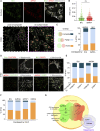
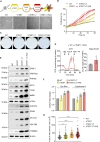

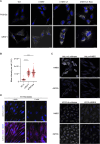
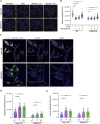




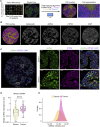

References
MeSH terms
Substances
Associated data
- Actions
LinkOut - more resources
Full Text Sources
